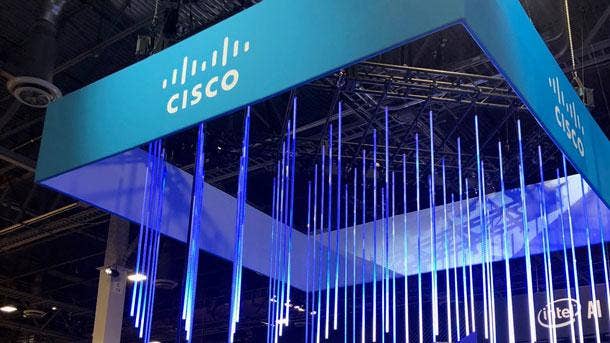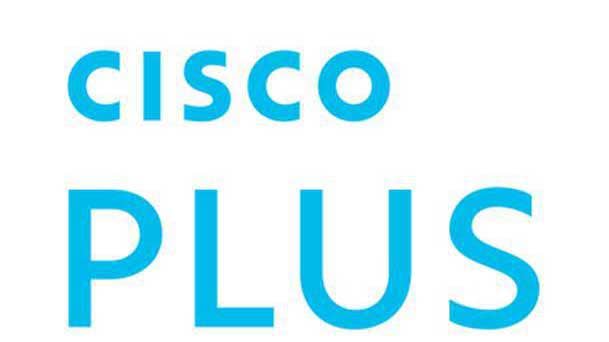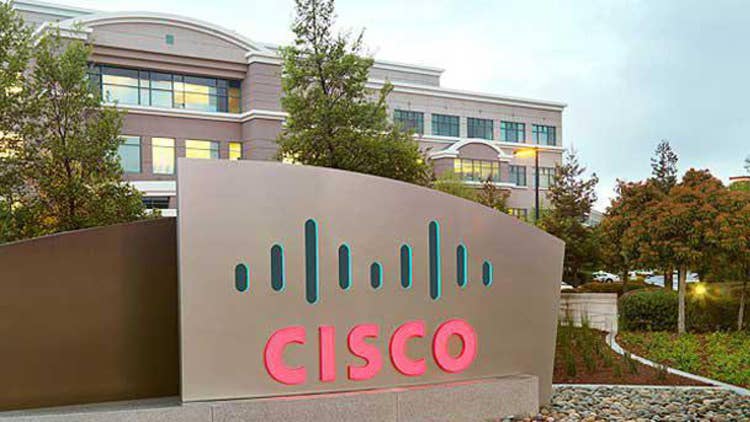Cisco Channel Chief Oliver Tuszik: Partners Are ‘Leading The Way’ For XaaS Evolution
‘In approximate numbers, $8 billion of our managed services revenues is [through partners] and the direct managed services we do is something like $250 million. So, it’s not a direct motion. It’s not our target. Our ability to scale and deliver the value comes from partners,’ Cisco Channel Chief Oliver Tuszik tells CRN.

The Partner Push For XaaS
Businesses and consumers alike are moving away from large, upfront spends and towards consumption-based, pay-as-you go pricing for many different things to help their businesses and personal lives run smoothly, so it just makes sense that the IT industry follows suit.
It’s no secret that Cisco has been busy doing just that over the last several years as its worked to transition its portfolio to an as-a-service model, or XaaS. It’s first offering is already on the market, Cisco Plus Hybrid Cloud and the company last month unveiled its next XaaS offer, Cisco Plus Secure Connect Now. When it comes to XaaS, Cisco’s partners are not only all-in, they’re leading the way, according to Cisco Channel Chief Oliver Tuszik.
Tuszik said that different customers require different solutions delivered in a variety of ways. It’s up to partners to give their clients the business outcomes they’re looking for. This can be done through platforms like Cisco Meraki, which is leading the company’s managed services charge by supporting the use cases that partners are addressing for their customers. At the same time, Cisco knows that it has to build the right financial models around managed services and XaaS for partners, an undertaking that Tuszik and his team are addressing in different ways for the company’s diverse ecosystem of partners.
There are extended sales times for XaaS, which will be an adjustment for some partners. At the same time, the supply chain is also causing slowed or delayed product delivery times. Cisco is mindful of both of these current challenges and Tuszik said he and his team continue to work with partners to define and carve out new models for future channel growth.
Tuszik sat down with CRN to talk about Cisco’s XaaS transformation and how partners fit in, the financial models in place to make XaaS profitable for the channel, supply chain, and what partners can expect from Cisco in the second half of 2022.
Here’s what Tuszik had to say.

Are partners coming with Cisco on the XaaS journey?
They are leading it. I would love to say that we invented it, but “as a service” has different names. In the end, it’s the idea of combining different products, services, software, and bundling in a way so that it fits better [with] the needs of the customer. And to be very clear, this is not an idea from the analysts or the vendor side, it’s something that is coming from the customer demand to reduce complexity. We’re in a world where everybody has accepted that they need digital transformation and the companies that didn’t accept that are no longer existing. We’re in a motion [now] where everybody’s thinking about: “How can I use technology to create value without dealing with technology?” We’re now in a phase where approximately 75 percent of the IT budget is with non-IT buyers -- so, people that don’t understand technology trying to buy technology. They’re looking for a way to buy technology with a direct link to their business need and for a direct reduction of complexity. So, instead of buying a Wi-Fi controller, switches and access points, you want to have Wi-Fi in all your buildings. That’s a very simple thing. A lot of people when we’re talking about managed service or as-a-service, think back to the ‘80s and ‘90s – a big time for outsourcing -- that’s also a managed service, but managed services can be a very specific as a service solution for a specific industry or for business-specific vertical.
Partners [have done] this before. When I was running a partner [organization] a couple of years ago, we had a big, growing managed service practice. We were measuring recurring revenues, we were thinking about renewals, and most of [Cisco’s] bigger and smaller partners have been in this motion before. When we look forward, the addressable market in 2025 will be approximately 45 percent via managed service. So, if we are not part of this one, we might have the best products, but customers want to buy them differently. That’s why we have always had a managed service practice. To be clear, we started more than 10 years ago, but about one and a half years ago, we decided to accelerate that. Chuck [Robbins, Cisco’s CEO] said: “We want to.” Then, a lot of people said: “Oh, you will deliver all new products.” But no, it’s really a combination of the new products and offers, but also enabling the different types of partners, from existing partners to new partners, to sell our technologies, our software and services in an as a service model. And that’s why we started also to change our programs [and] incentive schemes to change how we measure partners. We implemented last year at Partner Summit the new Provider role, which [partners are] taking up very well. And we started to build offers, [like] Cisco Plus Secure Connect and Hybrid Cloud. They’re in an early stage, but we see the appetite is huge and we’re working on scaling XaaS. Cisco’s managed services is a partner motion. In approximate numbers, $8 billion of our revenues is [through partners] and the direct managed services we do is something like $250 million. So, it’s not a direct motion. It’s not our target. Our ability to scale and deliver the value comes from partners.

How important is it for partners to become service providers in their own right and build on top of Cisco Plus offerings?
There’s no doubt that partners need to be able to offer bundled services. Customers don’t ask for “managed services.” They want a solution offering that serves their need, is easy to buy and easy to operate. So, you land pretty often in a managed, as a service motion -- like how we are all moving in our private life to this kind of consumption-based model. That’s why all our partners -- big ones and small ones -- are looking to build up their own unique offerings. And by the way, Meraki is our leading platform. It’s so easy to add different pieces together with [the Meraki platform]. We’re see partners picking this up partners that not only want to sell Meraki, but partners who want to add value to our platform.
We have a partner who is building a solution on top of Meraki cameras that is able to recognize items on-camera. The [use] case is a coffee shop. It’s more or less a two-camera installation [and] you can tell the camera to identify coffee mugs. The cloud plays five pictures and then the system learns [what a mug is] from all angles and in whatever weather conditions. From this moment, the camera gives you the information: There is a coffee mug and it’s been standing there for five minutes. For a coffee shop, you can find out how much coffee is sold and at what time. But you can also go much further. If you love coffee, you know that Italian espresso needs to be hot and needs to be served within two minutes. So, you can track how long it was standing there before it got picked up. With this logic, you can do the same in a production plan. You manage the cameras like you manage the Wi-Fi access points and the switches. And now, you just add cloud-enabled software that creates a completely different value. It’s no longer a Meraki camera or access point, it’s a system that gives you information on customers experience. This is where our customers and our partners are moving. So, you might not be the company who’s delivering the managed service, but you might be somebody who’s adding a building block on top of this one. That’s the reason why we see more of these co-sell, or co-development partners. This [partner with the coffee shop use case] will never sell Meraki. That’s not their business. But we will now put them on our price list. And that’s just one example.

What’s the financial model for Cisco’s XaaS and how does that compare to competing offers in the market?
The Cisco model is different to the models in the market. First of all, our idea is not to build a managed service offer where we do the services, we own everything, and we just ask a partner to forward the invoice. Our approach is enabling the partners to deliver their unique, own managed service. That’s why we are also investing heavily in service creation. We have about 100 engagements right now with partners all around the world, helping them build their own managed services. So, that’s a different logic.
When it comes to the financial models, we are building different motions. Like we did in the past, [partners] can just buy and own the assets and build up their own managed service. We are utilizing Cisco Capital [Cisco’s financing arm] to build up models where we help [partners] handle the assets or ensure that they can pay over time. And we are even -- like for Cisco Plus Hybrid Cloud and more to come -- building offers where we own the assets and just charge the partner for the consumption. You will see us also adding more hardware as a service. And I don’t mean a classical financing model where, like a leasing model, you pay over three years. An as a service model would mean there’s a certain level of flexibility and they pay by usage, by the months or whatever. It’s pretty interesting for the collaboration business, but also interesting for hybrid cloud and other areas. So, our model is adapting to the needs of our partners. There are some that can handle this and want to handle this and want to own it. And there’s some situations where we own the risk on our side.

How do partners prepare for the extended sales time for XaaS?
It’s a transformation that is happening -- not something you do over the weekend. Because if you go into, let’s call it solution sales, and you’re talking to different people, to be clear, you still need to do the stuff below. If you believe that you no longer need to take care of the technical equipment, that’s wrong. We still need our amazing CCIEs and all the experts. But we need to further develop these capabilities in the company to add and bundle so that it becomes an outcome or a solution.
So, yes, there’s an impact with this one because it’s longer cycles, but it starts to pay off, especially when you come into the recurring motion. There’s one interesting effect right now because we have a huge catch-up happening on infrastructure investments. When you look at our hardware sales numbers, they’re just amazing and mind-blowing, which is, on the one hand, because we are still the best networking equipment, but it’s also because there was a dip due to COVID. So, it’s a catch up. Then, we have supply chain pressure, and everybody wants to make sure they have the best infrastructure ready because they all learned that’s the main thing [you need]. We’re talking about the cloud, but the cloud doesn’t work without the network. That’s why we see that some [partners] are happy to see this hype on the hardware side, but we need to be careful, including us, that we should not focus too much on this one, because it will come down. And then, it’s important that we continue to sell our managed services or as a service motion.

Is the supply chain crisis fundamentally changing how channel partners do business and is it pushing software over hardware?
If [the partner] needs to buy all the stuff upfront and wait for the deliverables, and [the customer] pays after a year, that’s not a profitable business. And don’t get me wrong, customer experience is a high priority, but in a market where the supply chain is not reliable, the idea of doing projects where you only pay on the full deliverable is not a sustainable business model. Not for our partners and not for us. There will be new models, and I know there’s government customers and regulations that will return, but I believe together with our partners, we need to define new models for the future. And to be clear, our partners have already started to do this.
I don’t think it’s a simple logic that if there’s no hardware, you buy software. Customers don’t come to us asking for software or hardware. They come with a business problem or a specific requirement. Of course, software creates a bit more flexibility and you’re less reliant on some of the delivery times. But keep in mind, every software runs on a piece of hardware somewhere, no matter if it’s in the cloud, or sitting under your desk. So, I think [businesses] will look more at software, but it’s not like it’s causing a radical shift to software.

What’s your message to partners for the second half of 2022?
The message is there’s no doubt that business is tough and full of challenges right now. Things are unpredictable. But we should not forget that we’re in an environment where the digital transformation is the standard. It’s not an option. And there was never a time where so many non-IT executives and buyers realized that their number one way to win is by using technology.
We, Cisco, the partners, [and] the industry, are the one that can help businesses. I believe it might sound radical in the time of challenge and horrible things that have been happening around the world, but I think the time for Cisco partners has never been better, which doesn’t mean easy. But the opportunity is there. I think despite global challenges, we will see growth and we will see an increase in demand from our customers. So, I [want to] call out to partners, invest in serving the customers in your unique way.